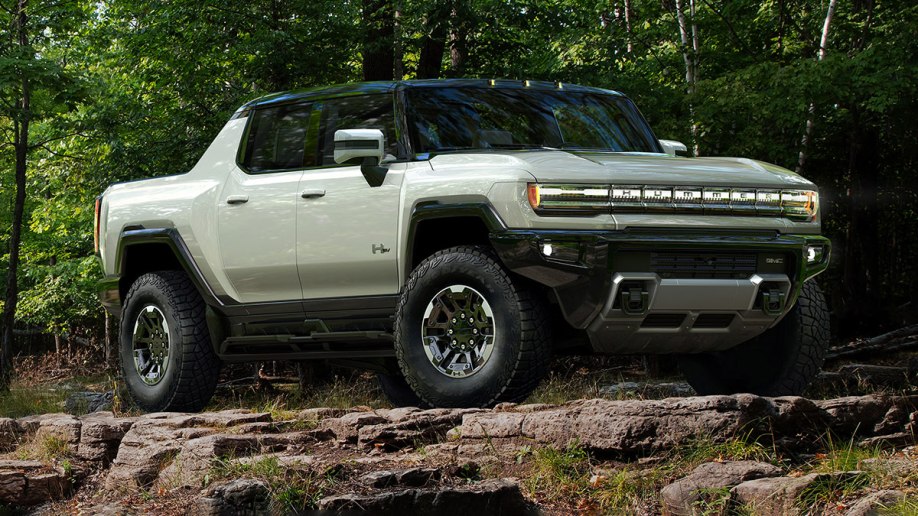
The 2023 GMC Hummer electric vehicle (EV) may be the heaviest. It rolls out the factory doors at just over 9,000.
The Hummer outweighs the Miata by more than two Miatas.
The truck’s sheer size is part of the reason. But the Hummer is a heavyweight by heavyweight standards. If you order GMC’s other full-size pickup, the Sierra 1500, with similar seating for five and more cargo bed space, the truck still comes in under 6,000 pounds (more than a Miata lighter).
Heavy Batteries Mean Heavier Cars
The difference is the battery. Batteries are heavy. According to GMC, the Hummer’s Ultium battery weighs about 2,900 pounds. It’s only 22 pounds lighter than some Toyota Corollas.
Auto safety experts are growing alarmed at the enormous weight of some of today’s electric vehicles.
Jennifer Homendy, head of the National Transportation Safety Board, told the Associated Press this week, “I’m concerned about the increased risk of severe injury and death for all road users from heavier curb weights and increasing size, power, and performance of vehicles on our roads, including electric vehicles.”
1,000 More Pounds = 47% Higher Chance of Dying
That’s not just a matter of wear and tear on roads and bridges. It’s about life and death in accidents.
A 2011 study by the National Bureau of Economic Research found that “controlling for own-vehicle weight, being hit by a vehicle that is 1,000 pounds heavier results in a 47% increase in the baseline fatality probability.”
The risk is even higher, the study found, when the striking vehicle is a truck or SUV – likely because their higher center of gravity means much of the energy transfer in an accident is centered above the bumpers where smaller cars are designed to absorb a hit.
Homendy has little ability to do anything about constantly growing vehicle weight. The NTSB investigates accidents. It can only make recommendations to agencies like the National Highway Traffic Safety Administration, which write safety regulations.
Someday, Every Car May Be Electric. But Not Soon.
She’s particularly concerned, she says, about the transitional period America’s drivers will likely be in for the next 20 to 30 years when lighter gas-powered vehicles share the road with heavier EVs.
“We have to be careful that we aren’t also creating unintended consequences: More death on our roads,” she told the AP.
EVs Make Power Cheap
Michael Brooks, executive director of the nonprofit Center for Auto Safety, notes that the extreme power of today’s electric cars compounds the problem. It’s easier for engineers to wring horsepower from electric motors than from gasoline engines. EVs also make 100% of their torque available instantly. Gas-powered vehicles must build power over time.
That 9,000-plus-pound Hummer, to use the poster example, is capable of a 0-60 mph sprint in about 3 seconds. “People are not trained to handle that type of acceleration. It’s just not something that drivers are used to doing,” Brooks told NPR.
Future Batteries May Solve This
In the long term, more energy-dense batteries may provide a solution. Both Toyota and Nissan have said they are working to perfect solid-state batteries that can achieve more range from each pound of battery. That could allow automakers to shrink battery size and vehicle weight without paying a penalty in range.
But, for now, the NTSB’s Homendy warns, “Safety, especially when it comes to new transportation policies and new technologies, cannot be overlooked.”







